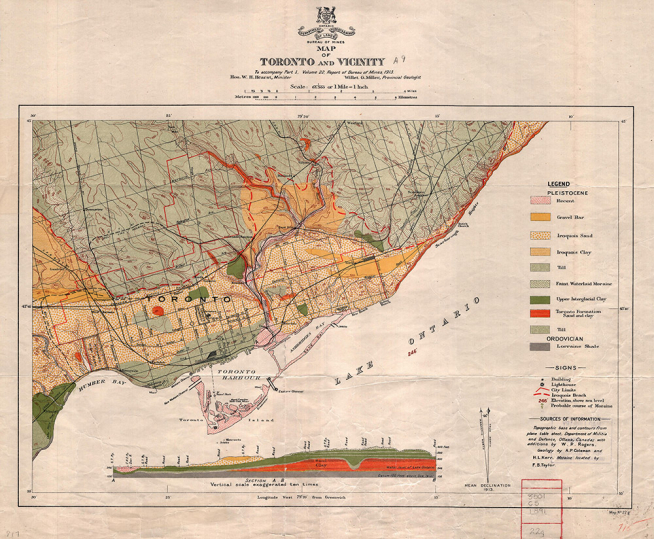Dr. A. P. Coleman (1852-1939)

Submitted by Vincent Vertolli, Assistant Curator Geology
Dr. A. P. Coleman was appointed Director of the Museum of Geology in 1913 to join five other museums, Archaeology, Mineralogy, Palaeontology and Zoology which came to be known as the Royal Ontario Museum. Dr. Coleman is considered one of Canada’s pre-eminent geologists who during his long career in the earth sciences travelled to all the continents and sea-to-sea in Canada in his insatiable search for a better understanding of earth’s history and evolution. Awarded many titles and medals during his long career he was most proud of having a mountain, Mount Coleman in British Columbia, named in his honour.
Dr. Coleman’s scientific observations included all types of rock ranging in age from Precambrian to Recent. His many publications covered gold mines in north-western Ontario, the famous Sudbury mining camp, copper, iron and building stone but his greatest achievement came from his work on glaciations both modern and ancient. One of his favourite studies was the Pleistocene glaciations (Ice Ages) of southern Ontario especially around Toronto.
The same year that Dr. Coleman became Director of the Museum of Geology in 1913 the Ontario Department of Mines published his “Map of Toronto and Vicinity” the first comprehensive geological map of Toronto.
A geological map is essentially a birds-eye view of, in the case of the Toronto, the types of sediments found and their distribution through the area. Geological maps are keys to communicating earth science information and their use is fundamental to land-use planning. For example if you’re planning to build a house you have to know, for drainage purposes, if and where there are clay layers. Geologically the different types and distribution of sediments are the result of processes that give clues to the history and evolution of the area. The presence of clay layers and a sandy beach, known as the Iroquois Beach (delineated on the map in red) is evidence for much higher lake levels, about 55 m, than present Lake Ontario. All of the features seen on the map, such as the Scarborough Bluffs and Toronto Islands are the result of geological processes that began about 140,000 years ago.
Dr. Coleman’s map has stood up very well over the years, a modern geological map of the Toronto region differs mainly in the nomenclature of the various units of sand, clay and till.
Did you know? It was 98 years ago today that the Royal Ontario Museum opened its doors. At 3 pm on March 19, 1914 the Duke of Connaught, then Governor-General of Canada, opened our doors to the public.
